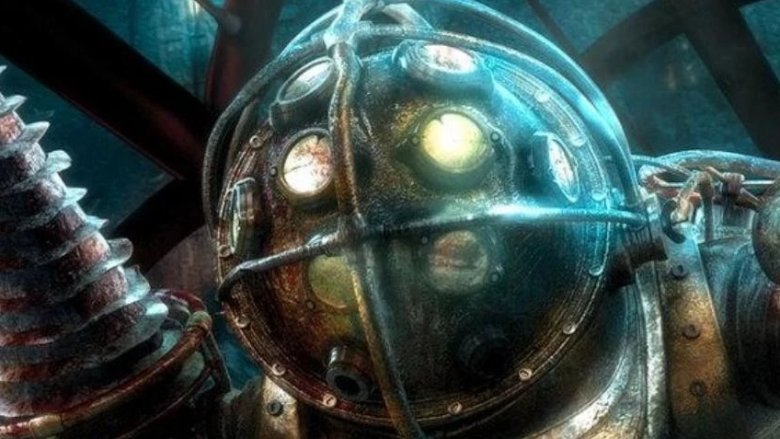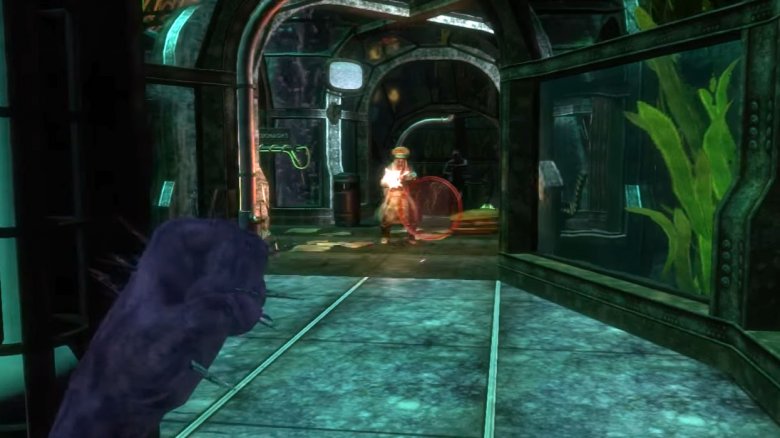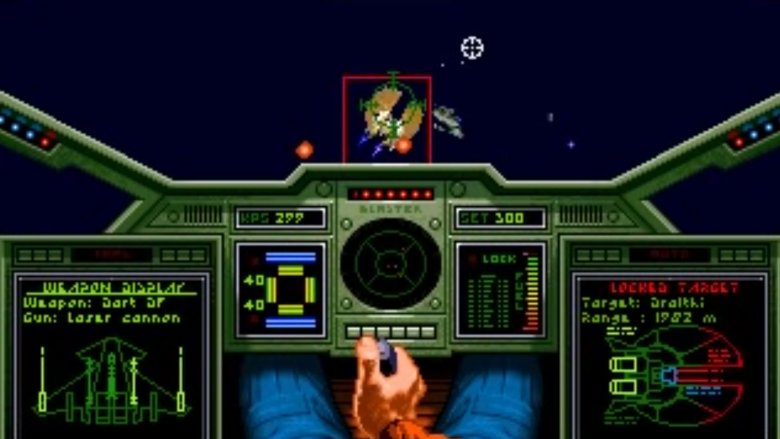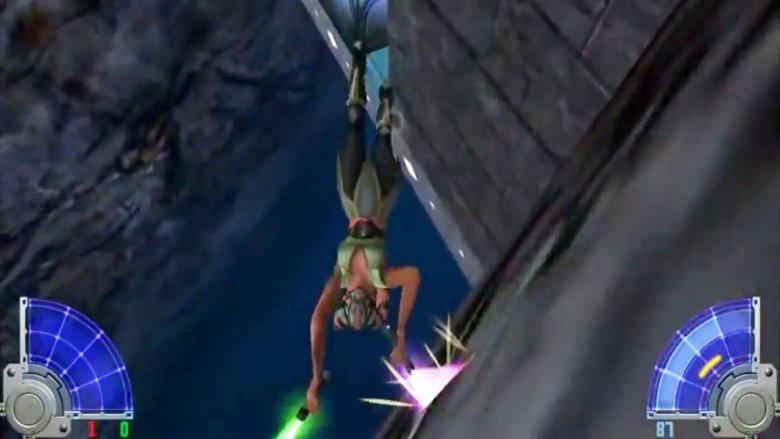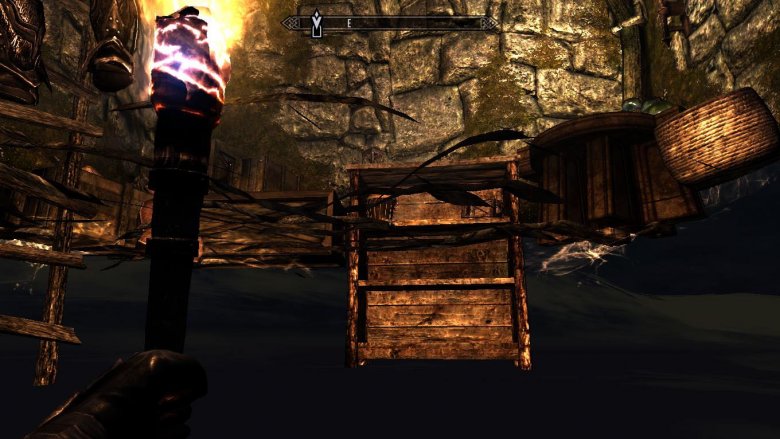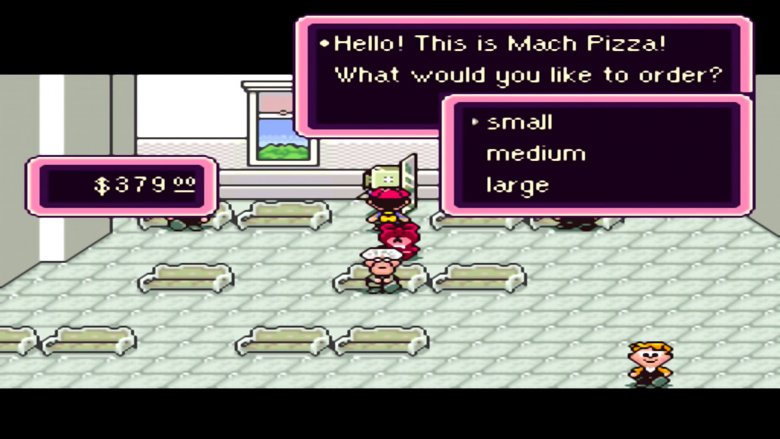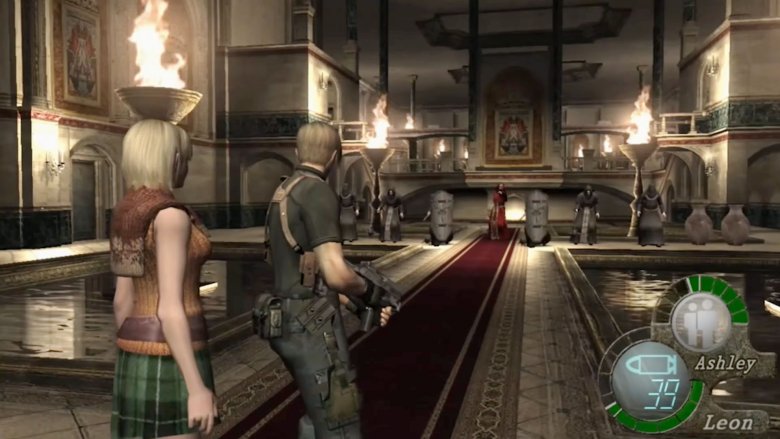Crazy Things Game Developers Hide From You
Video games don't always play fair. Usually, that's for the best. Without small, on-the-fly adjustments, many games would be too easy, too hard, or even worse, just plain boring. In order to keep you interested—and, sometimes, just to make sure that the game works right—developers occasionally bend the rules. Get used to it. It happens.
Sometimes, that means subtly altering how enemies work. Sometimes, that means cutting corners so that the virtual world comes together as planned. Often, a game gives players quiet advantages in order to make them feel like badasses. Occasionally, a game makes itself harder, ensuring that the player will feel challenged. It doesn't matter. Keep a feature hidden, and players won't even realize that they're being manipulated. They'll still have fun, though, and isn't that the entire point?
Uncharted changes how fast objects fall apart based on your speed
Uncharted didn't make its name on its gunplay. It became one of gaming's top franchises by cramming all of the thrills of a big budget adventure film into something you could play, making you feel like you're at the very center of the action. Over the course of the four main games (plus a few of the spin-offs), Uncharted asks you to scurry out of a sinking boat, jump from crumbling ledges, and climb your way through a train teetering on the edge of a cliff.
There's never any time to spare, either. No matter how fast—or how slow—you move, series star Nathan Drake barely makes to to safety before everything collapses. That is very much by design. Kurt Margenau, co-lead designer on Uncharted 4 and director of Uncharted: The Lost Legacy, admits that "if you're on something that's collapsing, we slow down/speed up the [animation] of that object based on how far along the ideal path you are." As a result, you always escape danger at the last possible second. It doesn't matter how good (or bad) you are. You're going to get the most exciting outcome either way, and the transition is done so smoothly that you won't even notice.
The cutscenes in Fallout: New Vegas screen in a makeshift movie theater
Most modern games break up the action with pre-recorded cutscenes. Fallout: New Vegas, 2010's entry in the popular series of post-apocalyptic RPGs, is no different. But Fallout: New Vegas' cutscenes aren't like the ones in other games. Technically, they screen in a special location in New Vegas' nuclear ravaged wasteland—but thanks to some clever tricks by Fallout's developers, you'd never know.
Instead of creating a whole new game mode to display cutscenes, the developers at Obsidian Entertainment simply used the tools they already had. When Fallout: New Vegas shows you a cutscene, the game transports your character to a special room where the images are being projected on a curtain. You're standing close enough to the pictures that you can't see the rest of the room, and Fallout takes away your controls and your in-game display so that nothing gets in the way of the image. A special character, Ron the Narrator, stands behind you and delivers the voice-over narration. His mouth moves and everything.
Fallout fans would've been none the wiser, either, if it hadn't been for a combination of cheats and glitches that put the player into third-person mode during cutscenes, revealing the dingy theater where Ron spends all of his time. No, you can't kill Ron. Yes, people have tried.
BioShock's enemies always miss on the first shot
Video games get more immersive and realistic every year, but they're still no match for real, human perception. In real life, if someone's sneaking up behind you, there's a good chance that you're going to notice. In a first-person shooter, unless the sound design and presentation is remarkably clue, you'll have no clue. Even in a well-designed game, it's cheap and annoying when you're shot from behind by an enemy you didn't know was there, particularly if you're running low on health.
In order to keep things feeling fair, BioShock implements a simple solution. As director Ken Levine explains, "First shots from an enemy against you in BioShock always missed." After all, there's no better heads-up that danger's lurking nearby than a bullet that whizzes by, just narrowly missing your head.
That's just one way that BioShock keeps the tension high, while also making sure that the player feels like a legitimate badass. In BioShock, if an attack would've made you lose your last point of damage, you'll actually turn invincible for a very brief period of time, creating the illusion that you barely scraped by. That's not a technique that's unique to BioShock, either: Assassin's Creed and Doom cram a few more hit points into your last sliver of health, making your close calls seem even closer.
Wing Commander crashes every time that you close it
Wing Commander hasn't been around much lately, but in the '90s it was one of the biggest and most beloved franchises in PC gaming, with nine titles released before 1998. There's also a feature film, an animated TV series, an entire series of novels, and a collectible card game, all of which bear Wing Commander's name.
And like any big video game series, Wing Commander went through its share of ups and downs during development, including one bug that developers never managed to fix. As the original Wing Commander's deadline loomed, developers struggled to squash one particularly resilient bug: every time users quit the game, an error message appeared. It didn't really matter, because the game was closing anyway. Still, ending an intergalactic spacefaring adventure with an ominous warning isn't a particularly user friendly experience, either.
Time ran out, and nobody found a solution—but someone did come up with a work around. Wing Commander's developers edited the error message so that it said "Thank you for playing Wing Commander" instead of actually telling you a crash occurred. Deadline hit, and problem solved.
Enemies in Jedi Academy throw themselves off of cliffs
Falling off of tall objects is a Star Wars staple. In A New Hope, Luke's blaster sends a handful of Imperial stormtroopers careening into a pit during his escape from the Death Star. Luke's hand—and later, Luke himself—tumbles into an abyss while confronting Vader in The Empire Strikes Back. Boba Fett dives from Jabba's barge into the sarlaac in Return of the Jedi, two halves of Darth Maul take a one-way trip down a near bottomless shaft in The Phantom Menace (don't worry, he survives), and Han ends up stumbling off of a bridge after he's stabbed by his son, Ben "Kylo Ren" Solo.
And so, the developers at Raven Software made sure that Jedi Academy, the last entry in the beloved Dark Forces/Jedi Knight series, stayed true to this long-lived Star Wars tradition. According to one of the developers, when you shoot enemies in Jedi Academy, they look for a nearby cliff. If they find one, they throw themselves off.
Not only does that keep battles from getting stale, but it really adds to the game's Star Wars flavor. Other enhancements that make Jedi Academy feel like its source material include making shots "fat" when hitting enemies but "thin" against level geometry, making players feel like expert marksmen, and lining up enemies stuntman-style so that they'd be in the perfect place to get mowed down by flashy lightsaber moves.
Skyrim's tables are actually shelves
Developers don't always have the resources they need to create the games that they want to make. Sometimes, they need to do more with less. That's why the bushes in Super Mario Bros. are just palette-swapped versions of clouds. It's why buildings from various Call of Duty games pop up in other series installments. When everything costs money, time, and technical resources, sometime's it's best to take a quick shortcut.
Even sprawling open-world games like The Elder Scrolls V: Skyrim cut corners. Sure, Skyrim might be a huge place filled with all kinds of small details. It's also home to numerous small cheats. Many rooms share the same architecture, even if the contents vary. Non-player character designs repeat. And, finally, the tables that the residents of Skyrim sit down at to enjoy their meals? They're actually just shelves that have been submerged partially underground, only leaving the top and the sides—i.e., the "legs"—visible. After all, Bethesda already had a perfectly good surface created in Skyrim's shelving. Why reinvent the wheel—or, in this case, the home decor?
Civilization's Gandhi wasn't originally nuke happy on purpose
If you know anything about history, you know Gandhi, the Indian civil rights leader who build his legacy on nonviolent resistance. If you've played Civilization, you know that digital Gandhi doesn't always practice what the real-life version preaches. In the popular strategy series, Gandhi drops nukes more often than any other character. It's not even close.
Gandhi's utter glee at pushing that big red button isn't an accident, although it started as one. In the original version of Civilization, every leader had an "aggression" rating, in addition to a bunch of other stats that dictated their behavior. In order to accurately model Gandhi's pacifist philosophy, Civilization's designers set Gandhi's aggression to 1, which is more or less as low as it could go.
But you can change the characters' stats during gameplay, and if a leader decides to bring democracy to their country, their aggression drops by two. Stats can't be negative, however, and so instead of lowering Ghandi's aggression to -1, the stat looped back around and settled on its highest possible setting, 255—the perfect number to sit back and watch the nukes fly.
It was an accident, but it was a funny accident. Gandhi—at least, the Civilization version—has been nuke-friendly ever since. Call it a tribute, an Easter egg, or one of gaming's longest-running inside jokes. No matter what, you probably won't be laughing during the late game rounds, when Gandhi bombs your empire into submission. The real Gandhi would be so proud.
EarthBound's pizza delivery guy has the most complicated artificial intelligence in the game
One of EarthBound's many, many quirky abilities allows its hero, Ness, to hop on a pay phone—remember those?—and order a life-nourishing pizza. A few seconds after placing an order, the pizza delivery man arrives, navigating expertly around obstacles in order to make sure that Ness and his friends get their pizza pie piping hot.
But pizza delivery is not as simple as it seems. In order to make sure that the pizza guy can meet Ness at any place, any time, EarthBound's developers wrote a complicated pathfinding algorithm that's more sophisticated than almost anything else in the game. If Ness is completely isolated, the pizza guy gives up. In almost every other case, he makes darn sure that Ness gets the pizza he deserves.
EarthBound's programmers called out the pizza delivery guy's pathfinding routine as one of the most complicated and difficult things to program in the entire game. Given that it's such a small and inconsequential part of EarthBound as a whole, that's amazing. The pizza-inspired code isn't found anywhere else in the game—neither enemies nor allies use it—meaning that someone at HAL Laboratory devoted an awful lot of time to a feature that many players wouldn't even see. Of course, EarthBound is full of little touches like that. That's one of the many reasons why it's so special, even to this day.
Resident Evil 4 dynamically adjusts the difficulty while you play
Many games ship with different difficulty settings. Some let you change the difficulty during the game. A few—like many of Nintendo's recent titles—even offer you a one-time helping hand if you're struggling with a particular level.
Resident Evil 4 takes a different approach. As the team over at the Game Maker's Toolkit YouTube Channel point out, Resident Evil 4 changes based on how well (or how poorly) you're playing. Do well, and enemies will be more aggressive, and take more hits to put down. There will be more of them, too. If you're not doing so hot, trickier foes disappear entirely, making specific confrontations much, much easier.
Other games do this, too, of course. But as GMTK observes, there are essentially no other titles that hide this information from the audience (or, if there are, we haven't found them yet). If you only play Resident Evil 4 once—and, let's remember, most people who start a video game never finish it—you'd never know that the game you just played wasn't the same for everyone. Resident Evil 4's difficulty system isn't just a great way to keep people engaged with the game, ensuring that they're challenged but never stumped, but it's a balm to competitive gamers' fragile egos, too. After all, if you don't know that you're playing on easy, there's no way you can get upset about it.
Overwatch makes the biggest threats the loudest
With 12 players in every match—each one of whom plays a fully fleshed-out character with unique voice lines, appearances, and special powers—Overwatch can get pretty crazy. And yet, to Blizzard's credit, it's (almost) never confusing. Despite the madness unfolding on-screen, you can always easily separate friend from foe, and if you're paying attention, you'll know roughly where every member of the enemy team lurks.
In large part, that's because Overwatch performs some pretty neat tricks with its soundtrack to make the game more accessible, but it's the kind of thing that you wouldn't notice unless you listen very carefully (or read interviews with the developers). Instead of simply making objects closer to you louder, as in most games, Overwatch uses something called the "importance system" to drive its sound mix. The bigger threat that an enemy is—because, say, they're looking or shooting at you—the better you'll hear his (or her) footsteps, weapons, and lines of dialogue. You'll also hear different lines of dialogue when a foe unleashes his or her ultimate, making it easy to tell if the attack is friendly or not.
Even better, Overwatch manages to boost the volume of impending threats while still honoring the level's geography. Threats in another room sound muffled, thanks to the walls, even if they're technically louder than the friendly character standing nearby. It's a cool system that really adds a lot to the game. Even if you can't actually play Overwatch with your monitor turned off (like director Jeff Kaplan wanted), the importance system goes a long way towards explaining why Overwatch remains so popular: it nails the little things.

